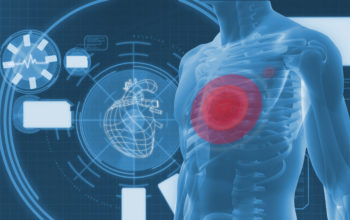
Date: 9th December 2020
Knowledge of DNA sequences has become indispensable for basic biological research, medical diagnosis, biotechnology and healthcare to name but a few. However, whilst the field has advanced tremendously over the past thirty years, the most widely used alignment and analysis tools require expertise which falls short of the majority of researchers. Now, scientists have developed the world’s first mobile genome sequence analyser, a new iPhone app called iGenomics. By pairing an iPhone with a handheld DNA sequencer, users can create a mobile pocket sized genetics laboratory, enabling DNA analysis in the most remote locations with minimal equipment.
Over the past few years, Oxford Nanopore Technologies (ONT) based in the UK, has developed a small USB-sized, inexpensive sequencing instrument called MinION, that has facilitated genomics experiments with minimal equipment in essentially any environment. The Nanopore sequencing technology works by measuring the change in ionic current as a DNA molecule is passed through a nanopore. Once sequenced, the reads are typically stored and saved for further processing, which typically for most DNA sequencing methods, involves high-end laptops, servers, or even supercomputers.
Now, scientists from Cold Spring Harbor Laboratory, US, led by Michael Schatz have developed iGenomics – the first comprehensive mobile genome analysis application, with capabilities to align reads, call variants, and visualise the results entirely on an iOS device.
iGenomics allows interactive sequence analysis on a smartphone, currently an Apple iphone, and uses common touchscreen gestures allowing users to browse the alignment data in an easy-to-use and intuitive manner, with almost no learning curve.
It provides multiple options for inputting both reads and reference files: such as Dropbox, or loading files straight from Google Drive, Files or Airdrop. This means analysis can occurs in the most remote locations and doesn’t require internet access.
Validation of iGenomics
To evaluate the efficiency and accuracy of iGenomics the team tested several simulated datasets, mapping DNA sequences of viral pathogens, such as influenza, Ebola and Zika virus. All of these important viruses were analysed in <5 seconds on the mobile device, and showed a high degree of accuracy – in most cases well over 90%. Overall, iGenomics tended to exhibit a higher degree of recall, precision, speed and overall accuracy when compared to industry standard tools performed on a computer .
Next, the team wanted to test the algorithm on several clinical and environmental viral samples sequenced using the ONT MinION and again compared the results to several well-established standard tools. In all of the cases examined, iGenomics had a faster runtime than desktop equivalent tools.
Finally, the team developed an influenza “pan-genome reference sequence” containing representatives for three different influenza genomes which included a catalogue of mutations in these genomes that are known to reduce the efficacy of antiviral treatments. Using iGenomics to run simulated reads they showed a >93% identification rate, meaning that in majority of cases, this simple process could accurately and quickly (<5 secs) determine the type and subtype of the flu genome entirely on a mobile device.
Conclusions and future applications
The team here have demonstrated the first comprehensive solution for researchers and scientists to easily analyse sequence data, using a smartphone. The iGenomics app, could be easily used, with minimal training, without the need for the internet, and provided rapid and accurate results.
iGenomics was designed for quickly computing detailed genetic information about specific mutations within different viral or bacterial genomes, and could identify mutations important for diagnosis and treatment.
Whilst, the algorithm works quickly and accurately, it is limited in the size of genomes that can be processed due to the lower amount of processing power in a smartphone versus specialised computers. However, for most applications this shouldn’t be an issue.
Future developments for iGenomics are wide-reaching and it is likely to evolve to the point where DNA sequencers could be directly attached or integrated with mobile devices. In fact, ONT have already announced that they hope to have their new tiny sequencer, SmidgION, ready for launch in the near future, and it will indeed connect directly to an iOS devices.
The iGenomics team say that the application may even find its way into the hands of astronauts – as the system has already been likened to the “tricorder” featured in Star Trek this seems a fitting journey for this little device.
Smartphone technology and apps are changing our healthcare industry and the way we live our lives. From a recent burst of wide-ranging COVID-19 apps, to smart watches able to detect cardiac defects, to smartphone apps than can diagnose skin cancer. This latest app is likely to accelerate personalised diagnosis, on-site analysis of environmental samples, monitoring of pathogens or disease outbreaks and so much more…
For more information please see the press release from Cold Spring Harbor Laboratory
Palatnick, A., B. Zhou, E. Ghedin and M. C. Schatz (2020). “iGenomics: Comprehensive DNA sequence analysis on your Smartphone.” GigaScience 9(12).
https://doi.org/10.1093/gigascience/giaa138


